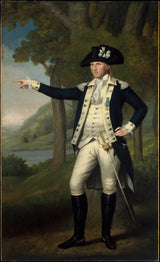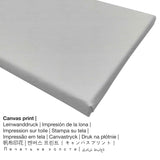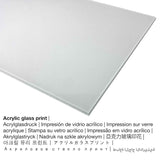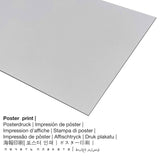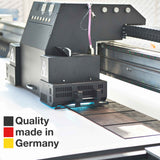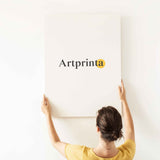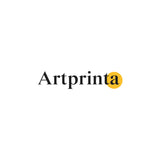Ralph Earl, 1791 - Marinus Willett - mbipụta nka mara mma
Ụtụ gụnyere. Mbupu gbakọrọ na ndenye ọpụpụ.
Ọrụ nka nke narị afọ nke 18 aha ya bụ Marinus Willett mere site Ralph Earl in 1791. Ihe osise a tụrụ nha: 91 1/4 x 56 inch (231,8 x 142,2 cm) and was made with the techinque of oil on canvas. This artwork is in the the collection of Museumlọ ihe ngosi nka nke Obodo. We are glad to mention that this artpiece, which is in the public domain is supplied with courtesy of Ụlọ ihe ngosi nka nke Metropolitan, New York, Arịrịọ nke George Willett Van Nest, 1916. Creditline of the artwork: Bequest of George Willett Van Nest, 1916. The alignment of the digital reproduction is Eserese ma nwee oke akụkụ nke 9: 16, nke pụtara na ogologo bụ 45% mkpụmkpụ karịa obosara. Ralph Earl was a painter from United States, whose style can primarily be classified as Rococo. The North American artist was born in the year 1751 na Shrewsbury, Worcester County, Massachusetts, United States wee nwụọ mgbe ọ dị afọ 50 in the year 1801 in Bolton, Tolland county, Connecticut, United States.
Nkọwapụta izugbe dịka The Metropolitan Museum of Art nyere (© Nwebiisinka - The Metropolitan Museum of Art - www.metmuseum.org)
The affluent merchant Marinus Willett (1740–1830) was a New York leader of the Sons of Liberty and a political radical who fought valiantly during the Revolution. Here, Willett wears his regimental uniform and the sword (17.87.3) that was presented to him by Congress in honor of his actions against the British at Fort Stanwix, in upstate New York, in 1777. The presence of three American Indians alludes to Willett’s role in negotiating a 1790 treaty with the Muscogee (Creek) tribe. Willett successfully balanced his military and political careers, culminating in his appointment as mayor of New York City in 1807.
Ozi nka
| Aha nke ihe nka: | "Marinus Willett" |
| Nhazi nka: | sere |
| Nhazi nka: | nka ochie |
| Century: | 18th narị afọ |
| Emepụtara n'afọ: | 1791 |
| Afọ nka: | karịa afọ 220 |
| Ihe osise izizi: | mmanụ na kwaaji |
| Nha nke ihe osise izizi: | 91 1/4 x 56 inch (231,8 x 142,2 cm) |
| Ụlọ ihe ngosi nka / ebe: | Museumlọ ihe ngosi nka nke Obodo |
| Ebe ngosi nka: | New York City, New York, Njikota Obodo Amerika |
| Dị n'okpuru: | Museumlọ ihe ngosi nka nke Obodo |
| Ụdị nka nka: | ngalaba ọha |
| Site n'aka: | Ụlọ ihe ngosi nka nke Metropolitan, New York, Arịrịọ nke George Willett Van Nest, 1916 |
| kreditline ọrụ nka: | Arịrịọ nke George Willett Van Nest, 1916 |
Tebụl ozi omenkà
| Ihe nkiri: | Ralph Earl |
| Aha nka ndị ọzọ: | Earle Ralph, Ralph Earl, Earl Ralph, Earl, Ralph Earle |
| okike onye nka: | nwoke |
| Nationality: | American |
| Ọrụ: | onye na-ese ihe |
| Country: | United States |
| Nhazi nke onye nka: | nna ukwu ochie |
| Ụdị nka: | Rococo |
| Nwụrụ anwụ: | 50 afọ |
| Afọ ọmụmụ: | 1751 |
| Ebe amụrụ onye: | Shrewsbury, Worcester County, Massachusetts, Njikota Obodo Amerika |
| Nwụrụ n'afọ: | 1801 |
| Ebe ọnwụ: | Bolton, Tolland County, Connecticut, Njikota Obodo Amerika |
Ngwa ngwaahịa ị nwere ike ịhọrọ
Anyị na-enye ụdị nha na ihe dị iche iche maka ngwaahịa ọ bụla. Anyị na-ahapụ gị ka ịhọrọ n'ime ụdị ndị a:
- Mbipụta kwaaji: A canvas print is a printed cotton canvas mounted on a wood stretcher. Your printed canvas of your favorite artwork will let you turn your art print into a large artwork as you would see in a gallery. Hanging your canvas print: The great advantage of canvas prints is that they are relatively low in weight. That means, it is easy to hang the Canvas print without extra wall-mounts. Therefore, a canvas print is suitable for all types of walls.
- Aluminom ihe eji eme ihe: Aluminium Dibond prints are metal prints with an impressive effect of depth - for a modern look and a non-reflective surface structure. A direct Aluminium Dibond Print is your excellent start to fine art prints on aluminum. The direct print on aluminium is the most popular entry-level product and is an extremely stylish way to display fine art prints, because it draws focus on the whole artwork.
- Poster (akwa akwa akwa): The poster is a printed sheet of canvas with a granular surface structure, which reminds the actual artwork. It is excellently qualified for putting your art replica using a custom-made frame. Please note, that depending on the absolute size of the poster print we add a white margin of around 2 - 6cm round about the print in order to facilitate the framing with a custom frame.
- Glass acrylic e biri ebi (nwere ezigbo mkpuchi iko): An acrylic glass print, which is sometimes referred to as a plexiglass print, will change the artwork into amazing home decoration. The acrylic glass protects your custom art replica against sunlight and external influences for many years.
Nkọwa akụkọ ahaziri ahazi
| Ụdị edemede: | ọmarịcha nka |
| Usoro mmeputakwa: | dijitalụ mmeputakwa |
| Usoro mmepụta: | UV kpọmkwem obibi |
| Production: | German mere |
| Ụdị ngwaahịa: | a na-achọ |
| Eji ngwaahịa a chọrọ: | foto mgbidi, ihe ndozi ụlọ |
| Ndozi onyonyo a: | usoro eserese |
| Oke akụkụ onyonyo: | 9: 16 |
| Nsonaazụ: | ogologo bụ 45% mkpụmkpụ karịa obosara |
| Ngwa ngwaahịa dị: | Mpempe akwụkwọ, akwụkwọ mmado (akwụkwọ akpa), mbipụta enyo acrylic (nwere ezigbo mkpuchi iko), mbipụta ọla (aluminium dibbond) |
| Mbipụta kanvas (akwa akwa na etiti ihe ndọtị) dị iche iche: | 50x90cm - 20x35", 100x180cm - 39x71" |
| Mbipụta iko acrylic (nwere ezigbo mkpuchi iko) dị iche iche: | 50x90cm - 20x35", 100x180cm - 39x71" |
| Nhọrọ nha nke akwụkwọ mmado (akwụkwọ kwaaji): | 50x90cm - 20x35" |
| Nha aluminom dibond (ihe aluminom) nha: | 50x90cm - 20x35" |
| Igwe onyonyo: | mmeputakwa na-enweghị isi |
Disclaimer: We try everything to describe the art products as closely as possible and to illustrate them visually on the respective product detail pages. Nonetheless, the colors of the printing material and the imprint may differ to a certain extent from the presentation on the screen. Depending on the screen settings and the condition of the surface, colors might not be printed one hundret percent realistically. Given that all art reproductions are processed and printed manually, there might also be minor differences in the size and exact position of the motif.
© Nwebiisinka | Artprinta.com (Artprinta)

